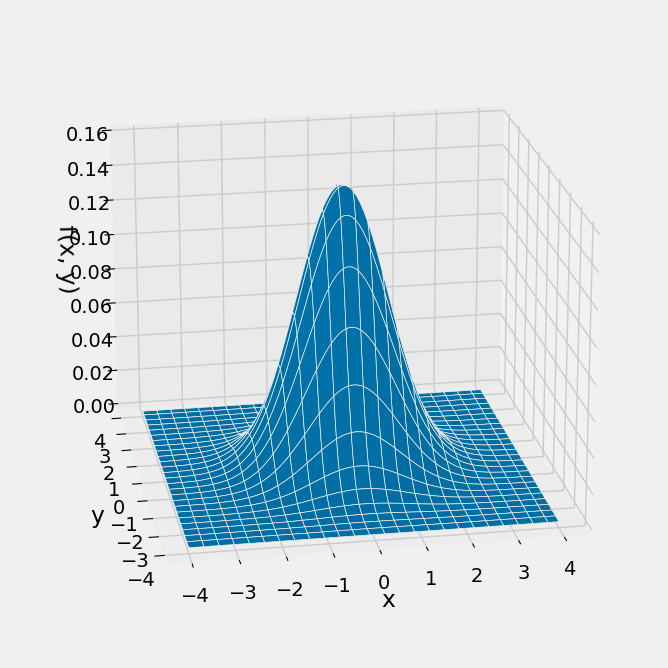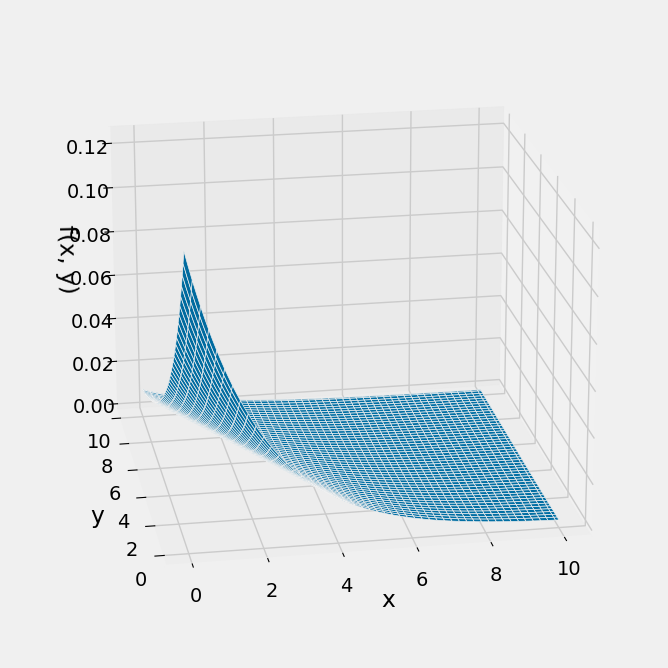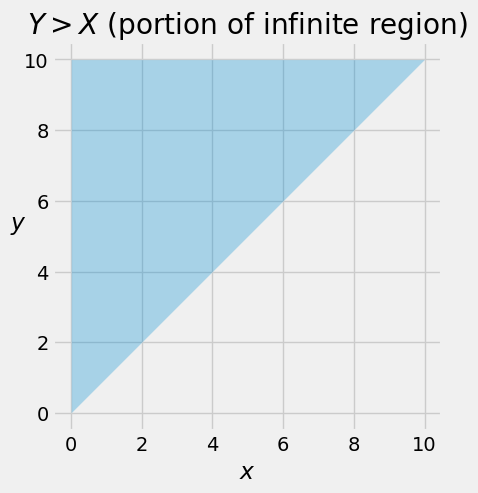17.2. Independence#
Informally, the definition of independence is the same as before: two random variables that have a joint density are independent if additional information about one of them doesn’t change the distribution of the other.
One quick way to spot the lack of independence is to look at the set of possible values of the pair
Quick Check
The “unit disc” is the disc of radius 1 centered at the origin. That is, it’s the set of points
(i) It is not possible to determine whether or not
(ii)
(iii)
Answer
(iii)
See More
If the set of possible values is rectangular then you have to check independence using the old definition:
Jointly distributed random variables
for all intervals
Let
Thus if
This is the product rule for densities: the joint density of two independent random variables is the product of their densities.
The converse is also true: if the joint density factors into a function of
17.2.1. Independent Standard Normal Random Variables#
Suppose
Equivalently,
Here is a graph of the joint density surface.
def indep_standard_normals(x,y):
return 1/(2*math.pi) * np.exp(-0.5*(x**2 + y**2))
Plot_3d((-4, 4), (-4, 4), indep_standard_normals, rstride=4, cstride=4)

Notice the circular symmetry of the surface. This is because the formula for the joint density involves the pair
Notice also that
Quick Check
Answer
Quick Check
For some positive constant
Answer
Yes
17.2.2. Competing Exponentials#
Let
By the product rule, the joint density of
The graph below shows the joint density surface in the case
def independent_exp(x, y):
return 0.5 * 0.25 * np.e**(-0.5*x - 0.25*y)
Plot_3d((0, 10), (0, 10), independent_exp)

To find

The probability is therefore
We can do this double integral without much calculus, just by using probability facts. As you calculate, try to involve densities as much as possible, and remember that the integral of a density over an interval is the probability of that interval.
Thus
Analogously,
Notice that the two chances are proportional to the parameters. This is consistent with intuition if you think of
If
Quick Check
The lifetimes of two electrical components are independent. The lifetime of Component 1 has the exponential
Without calculation, pick the correct option: The chance that Component 1 lives longer than Component 2 is
(i) greater than
(ii) equal to
(iii) less than
Answer
(i)
Quick Check
Find the chance in Quick Check above.
Answer
If we had attempted the double integral in the other order – first
Let’s take the easy way out by using SymPy to confirm that we will get the same answer.
# Create the symbols; they are all positive
x = Symbol('x', positive=True)
y = Symbol('y', positive=True)
lamda = Symbol('lamda', positive=True)
mu = Symbol('mu', positive=True)
# Construct the expression for the joint density
f_X = lamda * exp(-lamda * x)
f_Y = mu * exp(-mu * y)
joint_density = f_X * f_Y
joint_density

# Display the integral – first x, then y
Integral(joint_density, (x, 0, y), (y, 0, oo))

# Evaluate the integral
answer = Integral(joint_density, (x, 0, y), (y, 0, oo)).doit()
answer

# Confirm that it is the same
# as what we got by integrating in the other order
simplify(answer)


